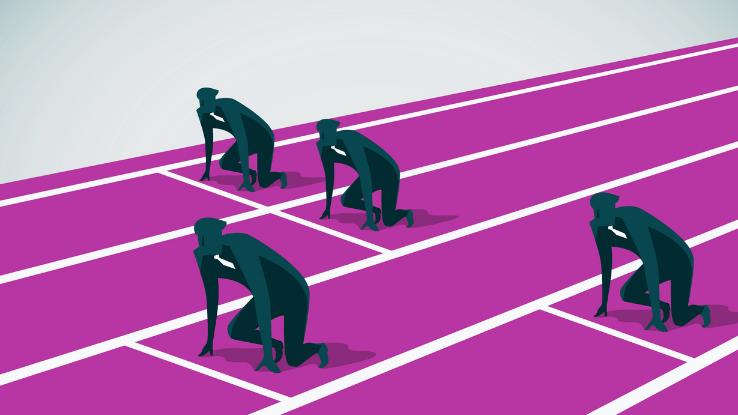
Over the last few years, workplaces that value Diversity, Equity, and Inclusion (DEI) efforts have begun implementing unconscious bias training. If you’re not already familiar with the term, unconscious bias, often referred to as implicit bias, refers to the deep-seated attitudes people hold subconsciously about those around them; when put into action, these prejudices also actively harm others and foster a discriminatory culture in the workplace.
So, how can you improve your work environment? That’s where unconscious bias training comes in. By its very nature, implicit bias is something that happens unconsciously; making sure employees, and the company at large, are aware of these biases is an essential first step. Here, we’ll review the best way to implement unconscious bias training so that your staff or peers can actively work against these unintended — but no less harmful — attitudes and actions.
What Is Unconscious Bias?
According to the Office of Diversity and Outreach at the University of California – San Francisco (UCSF), “everyone holds unconscious beliefs about various social and identity groups, and these biases stem from one’s tendency to organize social worlds by categorizing.” Since people aren’t aware of the biases they hold — or how those socially informed opinions shape their own — implicit bias is actually more common than explicit prejudice. Moreover, many individuals have a difficult time seeing their thoughts and actions as prejudice because these unconscious biases are often ego-dystonic — that is, inconsistent with their fundamental (and conscious) beliefs.

Some biases are deliberate or conscious; for example, a business owner may decide not to hire a formerly incarcerated person after reading data about recidivism rates. But implicit bias feeds into inequitable work environments, too; when given the opportunity, those thoughts that are unconsciously biased lead to biased actions. Although a person with unconscious bias may not openly say bigoted remarks against a group or community they don’t belong to, they may still treat others in a way that’s shaped by prejudice and harmful stereotypes.
For example, a person may recoil when they hear about a workplace that refuses to hire single mothers, but that same person may still give a promotion to a childless cisgender man over a single parent, believing — even if they wouldn’t openly admit it — that the man is more reliable or has more time to dedicate to the role. Sure, this hypothetical hiring manager doesn’t openly agree with the sweeping (and false) generalization that single mothers are less reliable, but their deep-seated bias still pushed them to favor a candidate without children. Needless to say, people who do not challenge their own unconscious biases further both inequality and inequity in the workplace.
Types of Unconscious Bias: How Implicit Bias Changes the Workplace
Since biases shape our behavior and actions, workplaces are built on biased views. In order to undo some of that damage and create a more equitable workplace, it’s essential to continually confront your own biases — including those you may not have actively considered in the past.

When it comes to workplace discrimination, employers can’t fire employees for reasons deemed illegal; that is, an employee can’t be fired for their race, religion, sex and all of the other classes protected by Title VII of the Civil Rights Act of 1964, the Americans with Disabilities Act (ADA), and, hopefully soon, the Equality Act. But that doesn’t mean biased decisions don’t happen — not just when employees are let go, but during everything from the hiring process to when promotions are made. When responsibilities are delegated or when employees collaborate during meetings, implicit biases often shape the workflow.
There are many different types of unconscious biases, including, but not limited to, the following:
- Affinity bias: Favoring someone you feel a connection to or share a similarity with. This can stem from demographic similarities or even sociological connections.
- Halo effect: When you allow someone’s great attribute to color your entire perception of them, thus favoring them in all (or most) situations.
- Horns effect: When you allow someone’s negative trait (or a negative experience with them) to color your entire perception of them, thus writing them off in all (or most) situations.
- Attribution bias: Refers to how we assess someone and their achievements. For example, while you might see your successes as a result of hard work, you might chalk someone else’s achievements up to luck.
- Confirmation bias: “The tendency to search for, interpret, focus on and remember information that aligns with our preconceived opinions” of a person (via The HR Source).
- Conformity bias: When you allow your views to be swayed by the opinions of others; oftentimes, this is informed by other types of biases since those might undergird the dominating group opinion. Like groupthink, this type of bias illustrates the need to think decisions through properly and independently.
- Beauty bias: Judging others, especially women, based on their appearance and/or how attractive you find them.
- The “Contrast Effect”: Comparing two people and/or their achievements without reason.
Of course, these “types” of biases are often augmented by, or entangled with, racism, sexism, homophobia, transphobia, ageism, ableism and/or other types of discrimination.
How to Implement Unconscious Bias Training in Your Workplace
To combat implicit bias, and the myriad of issues that stem from biased actions and discrimination, many businesses are holding mandatory unconscious bias training sessions. Held either in person or virtually, these sessions can be led by your human resources (HR) department, though some companies hire a professional speaker or teacher who specializes in implicit bias training
While these trainings differ depending on who’s leading them, the goal is often to create a relaxed, welcoming and safe environment where everyone in the group feels comfortable sharing their own experiences — and is encouraged to do so. Through group exercises or worksheets, your employees and/or peers will realize that we all have biases. Ultimately, implicit bias training sessions aim to help all employees recognize their own biases and teach them strategies that will encourage them to actively challenge said biases on a daily basis.

Of course, the best way to combat unconscious bias is to understand that it’s an ongoing process — that there’s no endpoint in the training process. Not only does this mean evaluating and combating your own biases and those of your peers on a daily basis, but it also means advocating for change on an organizational level, from changing discriminatory workplace policies or practices to making the environment more actively inclusive and accessible. While it’s impossible to know when your manager, for example, may have made a decision influenced by their unconscious biases, there can be comfort in knowing that everyone at your organization is being held accountable and being asked to examine their decision-making process.
So, how else can you help? Always look for ways to confront bias by disrupting poor decision-making or discriminatory actions and behaviors. “Although bias itself is devilishly hard to eliminate,” the Society for Human Resource Management (SHRM) notes, “it is not as difficult to interrupt.” The SHRM, which offers an abundance of great resources related to implicit bias training, also points out that unconscious bias training should be accompanied by conversations around systemic bias and, more specifically, structural and systemic racism.
Remember: Your workplace — and your tendency to hold unconscious biases — doesn’t exist in a vacuum. “Most work on implicit bias focuses on increasing awareness of individuals in service of changing how they view and treat others,” SHRM says. “This is important, but insufficient to advancing greater equity of opportunity, experience, and outcomes in our institutions and communities.” With this in mind, situating implicit bias trainings within larger conversations about the need for structural change and systemic inequities is a must.






